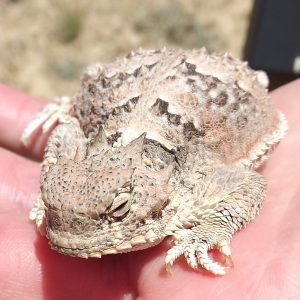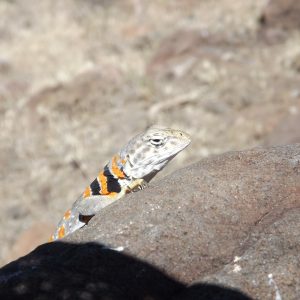Hello,
Well, another two weeks have come and gone, the last being by far the dirtiest! We spent the last week camped at the Hoyt Fire area about a three hour drive east of Carson City doing post fire monitoring. Even though it has been several years since it last burned the predominant dust is soot, therefore, rather than becoming dirt colored by the end of the day, you become soot colored. Even though we all wear long pants and I wear long sleeves it doesn’t seem to matter. Any skin, exposed or not- turns black. Any how, just another day at the office right?
We ended up having a good week any way. In the bustle of packing the Tahoe on Tuesday morning to head out we forgot to throw one of the tents in so the first night Sasha opted for sleeping under the stars and Andie and I shared the tent. That worked fine but the next night Sasha found that a scorpion had taken up residence under her sleeping bag so she slept in the tent and I staked out in the Tahoe. it’s about five inches too short for me to stretch out but it worked. Thursday night there was a rattle snake departing the camp site when we came back so I was more than happy to have the truck again. So far so good on the animal contacts.
The first day out in the field we had a mama antelope and her baby do just about a complete circle around our plot, stopping to check us out several times as if the mama was saying “ok, get a good look, those are botanists!”
The animal sighting that to me takes first place merits a little explanation first. On the opposite side of RT 50 the Navy has a training facility were they do test runs and I guess you could say “target practice” so there was a pretty regular flight pattern over head as the jets went to and from the site. Of course jets fly faster than their sound so when you hear one you look up and see nothing then have to look around for them. Well, this one time they came over super low so the engine was roaring right over head- you look up real quite thinking “oh crap” and see two doves flying in perfect battle formation! After the initial suprise it was quite funny!
We hiked some pretty rugged terrain trying to get into the burn area more and away from the road so we saw some pretty picturesque areas. The skeletal trees add a rather mournful feel, but it is still cool. One day we saw about ten mule dear bucks all still in velvet but I didn’t get my camera out fast enough. Oh well.
It is getting hotter here but humidity is still absent. I am glad we don’t have a thermometer out in the field because that would just make it harder to deal with. As is you just sweat and think “gosh is it HOT!”.
This week we will be out in the same area finishing up at Hoyt and heading on to the Clan Alpine burn area just a little ways back toward Falon. Not much but a little. That burn is up on the side/top of the Clan Alpines so we will get in some good hiking those days. Hopefully we can finish up out there this week and move back to the Pine Nuts to do more Sage Grouse sites.
Guess that’s all for now.




